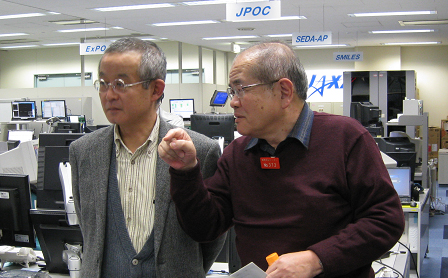This is an archive of information released in the past.
Disclaimer: It may contain broken links or outdated information. Some parts may not function in current web browsers.
*Visit https://humans-in-space.jaxa.jp/en/ for the latest information.

Experiment
- News
- Kibo Utilization Strategy
- Kibo Utilization Plan
- List of JAXA's Utilization Themes
- Experiment Facilities
- Space Environment Utilization
- Archive
Rad Silk experiment successfully completed! Embryonic development in the silkworm eggs confirmed on orbit! Data relating to the space radiation exposure effects on early embryonic development stage of the living organism obtained!
* Dates and times are Japan Standard Time (JST)
Rad Silk*1, JAXA's biological experiment that investigate effects of space radiation on silkworm eggs, which has been performed using the CBEF onboard Kibo, was successfully completed.
*1 Integrated assessment of long-term cosmic radiation through biological responses of the silkworm, Bombyx mori, in space
(Principal Investigator: Toshiharu Furusawa, Kyoto Institute of Technology University)
Rad Silk experiment was completed at 8:41 p.m. November 23, 2009.
This experiment aims at determining effects of space radiation (such as occurrences of mutation, malformation, and alteration in gene expression due to exposure to space radiation) on silkworm eggs. To this end, silkworm eggs in a state of diapause were delivered to the ISS.
We have a long history with silkworms. Silk textile manufacturing, which uses silk from silkworm cocoons, is a traditional industry of Japan. In science, silkworms are used as model organisms in genetics and physiology, with many known mutants.
Since silkworm eggs are very small, they can be delivered to space in large quantities. It ensures large numbers of data collection, and thus, it allows for probabilistic analysis and provides reliable data. In addition, it will be possible to comprehensively assess the effects of space radiation at cellular, molecular, and individual levels by examining their life cycles from eggs to hatches of the next generation.
Silkworm diapausing eggs were delivered to the ISS. Embryo developments in the eggs were confirmed aboard the ISS.
The eggs will be returned to the ground for post-flight analysis to evaluate relation between space radiation exposure and occurrence of mutation, effects on the next generations, and impacts of space radiations and expression of p53 gene*2 which is one of the genes expressed during the embryo development on orbit.
*2 p53 gene is a tumor suppression gene, which is involved in cell growth and apoptosis (programmed cell death). p53 has been described as "the guardian of the genome", "the guardian angel gene", referring its role.
Comments from Principal Investigator, Toshiharu Furusawa
The silkworm egg experiment, which has been performed at an altitude of 400 km above the earth, was completed. I hope that the embryo developments under both 1G andμG conditions went just properly. I am looking forward to the safe return of the eggs.
We, Rad Silk team, will work on post-flight analysis to the extent of our ability.

PI Furusawa (right) and Co-Investigator Ichita (left) overseeing the completion of the experiment at the UOA, TKSC (Photo credit: JAXA)
*All times are Japan Standard Time (JST)
| Copyright 2007 Japan Aerospace Exploration Agency | Site Policy |